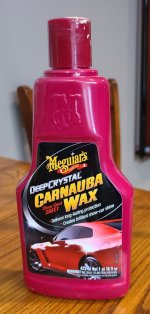Hello ,
I just used my last bit of Q -wax and I was wondering if just plain old carnuba wax would work , Car wax. I have also seen some with Brazilian wax. Would it do the same job or does Q -wax have something in it for Wood that makes it special. Also I have Johnson's paste wax for Wood , But I do not like the smell . I like to seal the shafts with a coat of it when i am done cleaning the shafts. What do you guys like to use . Thanks
I just used my last bit of Q -wax and I was wondering if just plain old carnuba wax would work , Car wax. I have also seen some with Brazilian wax. Would it do the same job or does Q -wax have something in it for Wood that makes it special. Also I have Johnson's paste wax for Wood , But I do not like the smell . I like to seal the shafts with a coat of it when i am done cleaning the shafts. What do you guys like to use . Thanks
